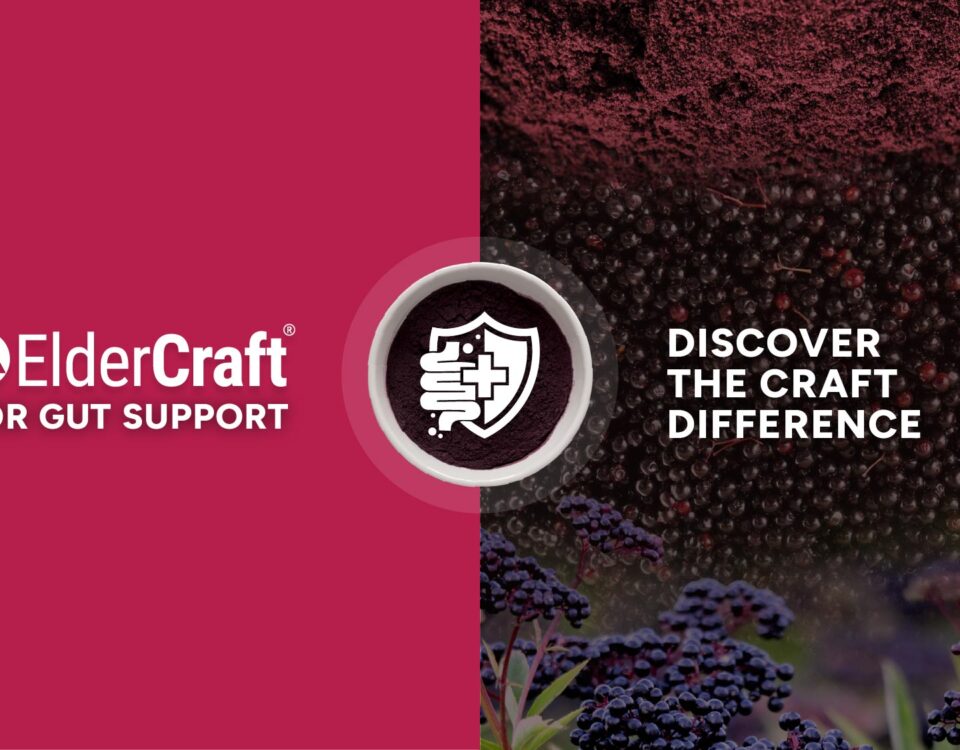Anthocyanins are flavonoid glycosides that are responsible for the red, blue, and purple colors of ripe fruit and have been shown to possess considerable antioxidant abilities. In an effort to discover information about the bioavailability of these anthocyanins, researchers at the USDA at Tufts, using Artemis’ standardized elderberry extract, found that anthocyanins are absorbed and can be detected in human plasma in the glycosolated form (whereas the glycosolated form of other flavonols [i.e. quercetin] is not absorbed). They also found a concentration of at least 100μg/L, 30 minutes after ingestion.
Cao, G. and Prior, R.L. 1999. Anthocyanins are detected in human plasma after oral administration of an elderberry extract. Clin Chem. 45(4): 574-576.
In additional human studies by this same group, elderly women consumed an acute dosage of Artemis’ standardized elderberry extract, and anthocyanins were detected as glycosides in both plasma and urine. The maximum concentration was reached within 71.3 minutes. Elimination appeared to follow first-order kinetics with a half-life of 132.6 minutes and most of the anthocyanins were excreted in the first 4 hours. Further analysis of the urine by HPLC-MS/MS confirmed the existence of the two main anthocyanins in elderberry (cyanidin-3-glucoside and cyanidin-3-sambubioside) as well as four metabolites. Demonstration of the presence of anthocyanins in their unchanged glycosylated forms may indicate the involvement of the glucose transport receptors in the absorption of these compounds in vivo.
Cao, G., Muccitelli, H., Sanchez-Moreno, C., and Prior, R.L. 2001. Anthocyanins are absorbed in glycated forms in elderly women: a pharmacokinetic study. Am. J. Clin. Nutr. 73(5): 920-926.
Milbury, P.E., Cao, G., Prior, R.L., and Blumberg, J. 2002. Bioavailability of elderberry anthocyanins. Mech. Ageing Dev. 123: 997-1006.
Wu, X., Cao, G., and Prior, R.L. 2002. Absorption and metabolism of anthocyanins in elderly women after consumption of elderberry and blueberry. J Nutr. 132: 1865-1871.
Researchers at the Institute of Biochemistry and Food Chemistry, Graz University of Technology in Austria conducted a human study in which they examined the concentration of anthocyanins in plasma after oral supplementation with Artemis’ standardized elderberry extract. After fasting overnight, the highest anthocyanin concentration in the plasma was noted 1 hour after ingestion and then declined rapidly. The researchers calculated that from the 200 mg dosage of anthocyanins, about 60 μg were found in the plasma.
In a subsequent human study the same researchers identified possible metabolites of the elderberry anthocyanins in urine and quantified the pharmacokinetics of these compounds. They found that after oral ingestion of Artemis’ standardized elderberry extract, anthocyanins were incorporated and excreted in the urine. Within 1 hour the first anthocyanins were excreted, with a maximum excreted after 3-4 hours. Anthocyanins from elderberry were incorporated and excreted in the urine in their intact glycoside forms.
Murkovic, M., Adam, U., and Pfannhauser, W. 2000. Analysis of anthocyane glycosides in human serum. Fresenius J. Anal Chem. 366: 379-381.
Murkovic, M., Mülleder, U., Adam, U., and Pfannhauser, W. 2001. Detection of anthocyanins from elderberry juice in human urine. J. Sci. Food Agric. 81(9): 934-937.
The researchers at Graz University continued to test the effect of oral supplementation with elderberry anthocyanins, this time in conjunction with a high fat meal. After an overnight fast, an initial baseline blood sample was drawn from test subjects and then Artemis’ standardized elderberry capsules were taken with breakfast (cheese, butter, jam, rolls, milk, coffee). The researchers found that anthocyanins were present in the plasma 2 hours after oral ingestion of elderberry extract and the maximum concentration in the plasma was reached 1-2 hours later. The slow uptake may be due to the high fat diet, which hinders a quick passage of the anthocyanins through the stomach.
Murkovic, M., Toplak, H., Abuja, P., and Pfannhauser, W. 2000. Analysis of anthocyanins in plasma for determination of their bioavailability. J. Food Composition & Analysis. 13: 291-296.
The researchers at Graz University also demonstrated the absorption of elderberry anthocyanins with and without simultaneous ingestion of sucrose. They found that when anthocyanins were ingested with sucrose the total excretion of anthocyanins was lower and the anthocyanins were excreted 1-2 hours later than without ingestion of sucrose.
Mülleder, U., Murkovic, M., and Pfannhauser, W. 2001. Metabolism of cyanidin glucoside of elderberry. Biologically Active Phytochemicals in Food Analysis, Metabolism, Bioavailability and Function, W. Pfannhauser, G.R. Fenwick and S. Khokhar (Eds.):421-425. The Royal Society of Chemistry:Cambridge.
In an animal study, researchers from both Ohio State University and University of Maryland examined the absorption and excretion of total and individual anthocyanins in rats that were fed diets containing Artemis’ standardized chokeberry and bilberry extracts (each with varying anthocyanin profiles and chemical compositions). Trace amounts of anthocyanins and higher levels of preseumable metabolites were detected in the plasma, with cyanidin-3-galactoside and cyanidin-3-arabinoside being the major plasma anthocyanins in both chokeberry and bilberry-fed rats. When the anthocyanins in the extracts were compared to the anthocyanins in the urine, the composition change was distinct. This observation is due to selective absorption and metabolism of various anthocyanin chemical compositions. Urine analyses revealed higher total anthocyanin levels in the urine of chokeberry-fed rats, compared to that of bilberry-fed rats.
It was also noted that the absorption of anthocyanins depends on the attached sugar group to its respective anthocyanidin. The diglucosides were absorbed better than the monoglucosides in the gastrointestinal tract (GIT). In conclusion, the chemical composition (ie the sugar moiety, acylation, mono/di-substitutions, methylation) of the individual anthocyanins determines their metabolic paths.
Jian, H., Manguson, B.A., Lala, G., Tian, Q., Schwartz, S., and Giusti, M.M., 2006. Intact anthocyanins and metabolites in rat urine and plasma after 3 months of anthocyanin supplementation. Nutrition and Cancer. 54(1): 3-12.






